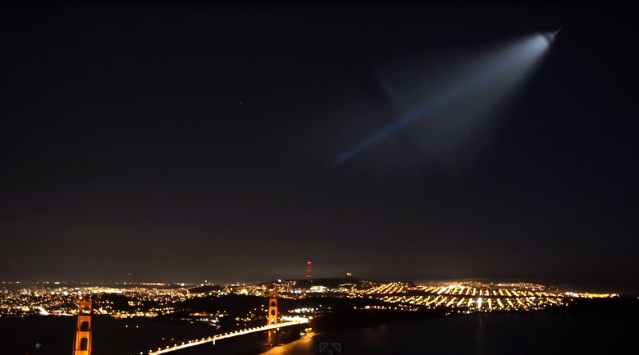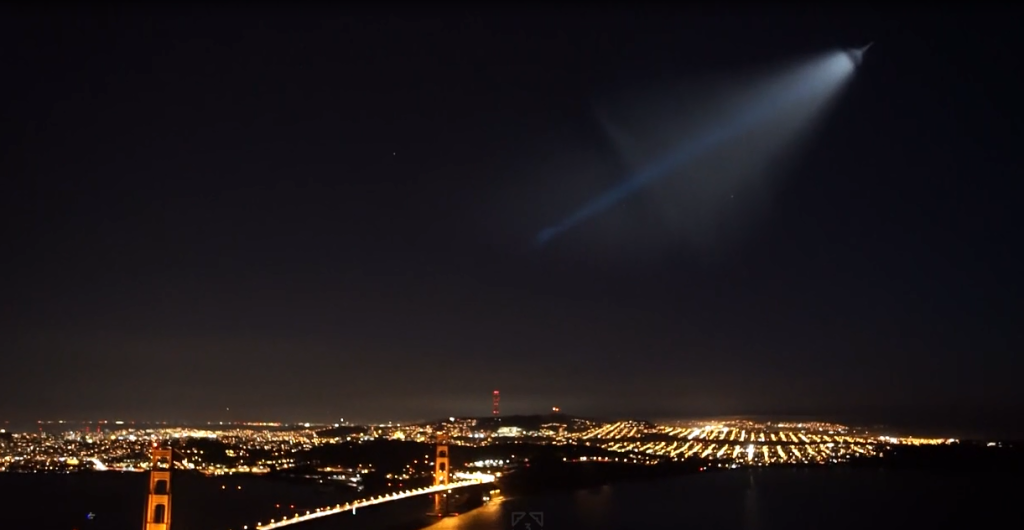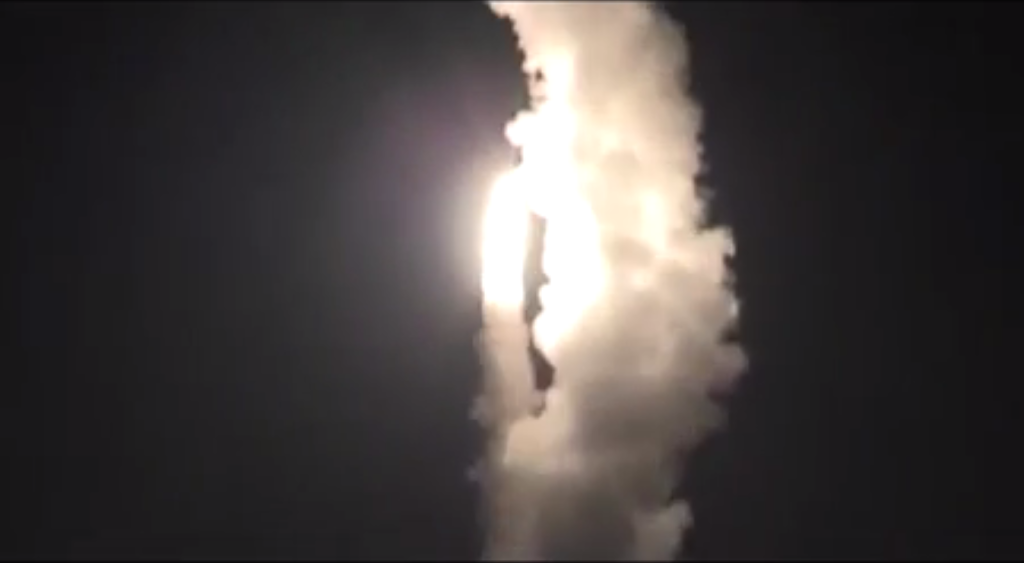by Peter Hayes
November 17, 2015
Most of the time, nuclear weapons and nuclear war are out-of-sight, out-of-mind.
For one day, millions of Americans were reminded that they live in the edge of nuclear chaos. A Trident submarine-launched ballistic missile fired on November 7 from offshore Los Angeles set ordinary folks abuzz all the way to Nevada.
The San Francisco time-lapse video of the exhaust plume looking south from the North side of Golden Gate was particularly haunting. This is what the end of the world will look like, from one angle—except there will be hundreds of missiles flying—450 from the Mid-West alone in all-out nuclear war.
One of the scores of the videos posted in LA was narrated by Domis Live. “We can pretty much guarantee that something was in the freaking air, right?”
He was lying in bed when he saw Twitter light up on his phone, and everyone was talking about UFOs, UFOs, he says… “Everyone and their mother has photos and videos of this thing flying around, it’s amazing.”
Not one person on social media says it was a missile test, he notes. Everyone is talking about UFOs.
So he asks his viewers, do you think it’s a UFO?
“I believe that aliens exist” he says, but he also admits that he doesn’t know for sure if it’s a UFO or a missile test which, he admits, is the Navy’s story. But, he asserts, it would be really, really bad to shoot it down because if it were a UFO, it might bring down the entire alien brotherhood on LA.
His video is worth watching just to hear the overlapping incredulous, frightened, awestruck voices of young people watching the missile plume in the sky. To me, they sound like lambs bleating before being led to the slaughter.
“What the heck? Dude, what is happening? Oh my God, guys! What is going on?” And then kind of tremulous, troubled: “What the hell?”
What the hell indeed. Strategic Command put out a press release fairly quickly stating that it was ours and not to worry. At least about UFOs. They fired another Trident from the same launch site two days later, this time in daylight, and STRATCOM released more information. This was an operational-shakedown test for an Ohio class submarine, SSBN 737 the USS Kentucky that is normally hidden deep mid-Pacific carrying its load of nuclear warheads when it’s not in its home port in Bangor, Washington.
After a long overhaul and refueling of its reactor, it has to fire two missiles (without warheads) before it is certified as able to put to sea and ready to fire nuclear-armed Trident missiles. All very banal—just another day in ensuring the United States is ready for the full “spectrum of conflict with nuclear adversary” as the briefing aboard the submarine relates in a photo released four days later by STRATCOM.
These tests have been going on for decades, and the plan is to keep this missile in service for more decades. Each missile carries up to 4 thermonuclear warheads ranging from 100 to about 500 kilotons…that’s about 8 to 42 times the size of the nuclear weapon that destroyed the city of Hiroshima in 1945. And each Ohio submarine has 24 launch tubes… you get the picture.
Why the launch took place at night was not stated. It might have been due to atmospheric conditions above the target zone at Kwajalein Atoll, or some other operational consideration in the Western Test Range as explained in this video by Northrop Grumman, one of the companies involved in the business of preparing for nuclear war.
But the social media reaction clearly took STRATCOM by surprise.
If social media is any indication, it appears that many Americans will see the start of a nuclear war announced by missile liftoff as the invasion of aliens. Many others apparently will welcome the resulting apocalypse as the start of the long-overdue end-times from the Book of Revelations.
Ironically, they wouldn’t be that wrong, although most of them wouldn’t be around to think about it for long if the United States absorbs a full nuclear attack from Russia or China.
They will also see a lot of incoming re-entry vehicles and it will look very different to the eerily beautiful missile plume at night.
Marshall Islanders have been looking at this end of Gravity’s Rainbow for decades, watching multiple re-entry vehicles flash out of the sky to smash into the instrumented atoll on their former home at Kwajalein—except if this were nuclear war, they would also see gigantic nuclear explosions in the millisecond before they were blinded and then vaporized, pulverized, incinerated, and irradiated.
Just for a day, Americans glimpsed what it must have looked like to walk into the gas ovens at Auschwitz and be surprised, only this time, on a global scale.
Not to be outdone, on November 15, the Russians night-fired two Bulava missiles from the Borey class submarine Vladimir Monomakh from near Kola, hitting the Kura test range on the Kamchatka Peninsula in the Far East.
You can see the second missile chasing the first one after breaking the ocean surface.
Apparently it worked, so we can all go back to sleep now confident that the United States and Russia both have working submarine-launched ballistic missiles.
These two launches a week apart appear to be unrelated. However, in a crisis, social media reports would affect perceptions—especially launches from Vandenberg missile base. During the Cuban Missile crisis between the United States and the former Soviet Union, for example, test missiles at Vandenberg were loaded with nuclear warheads and joined the active missile force. At the same time (October 26), the Air Force fired pre-planned, unarmed missile test from Vandenberg.
These days, social media may be the first warning that the Americans, Russians, Chinese, or North Koreans receive of missile lift-off heading in their direction. In 2013, the United States postponed a Minuteman missile test due to concern that North Korea might “mis-perceive” such a firing as aimed at them, or sending too strong a nuclear threat against North Korea that might lead to North Korean response.
Thus, how instantaneous social media reports of submarine, bomber, missile, and other indicators of nuclear attack will play into the nuclear command-and-control systems and decisions of nine nuclear-armed states is a good question—especially as these contagious reports may give false positives, false negatives, or simply miss the action altogether.
Postscript:
The American Chemical Society posted a video on November 10 on long-term (decadal) post-nuclear war survival in underground vaults, using 21st century stuff like carbon nano-tubes, fuel cells, graphene oxide water purification…”
All of which, they say, “makes for a cosy vault.”
Forgive me, but have aliens already arrived? What century is this again?








WOW!!